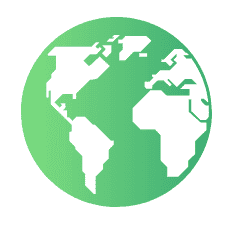Central America or South America: Which is Better to Visit?
Disclaimer: Some links on this page may be affiliate links. If you purchase anything through them, I will receive a small commission at no extra cost to you! Further details in the Privacy Policy.
Not everyone is lucky enough to have the time or budget to choose both. So which is better, Central America or South America?
I’ve been to every country in Central and South America. And to be honest, both regions are magical.
Both have amazing beaches, incredible volcanoes, wildlife-rich jungles, fun cities, wild parties, super affordable countries, fascinating cultures, ancient ruins, and so much more. Maybe great food is the one area where Central America falls short.
I’ll compare them on a variety of factors below, including costs, safety, transport and the many great things to do, then you can decide for yourself which is better.
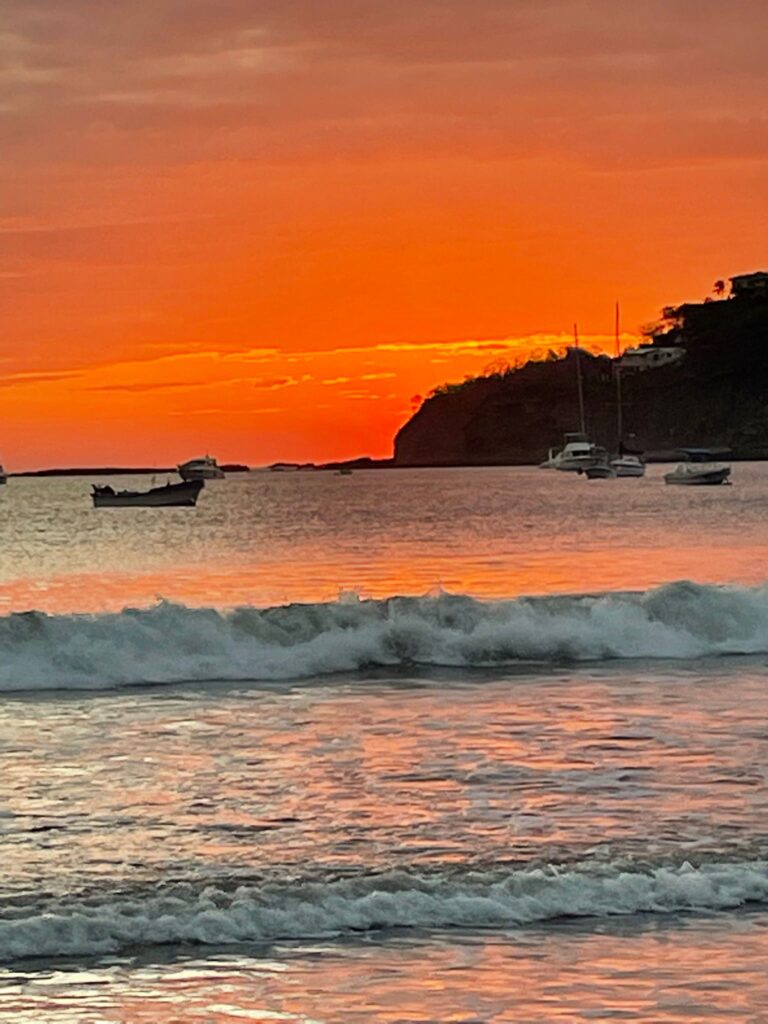
Which Countries Make up Central and South America?
Let’s start with the basics.
There are 7 countries in Central America, although Mexico is often counted as the 8th Central American country due to its cultural, linguistic and geographical similarities with the region.
In this post, we will be focusing more on the 7 smaller countries that fall under every definition of “Central America” rather than Mexico.
South America has 12 countries, plus French Guiana which is a French territory bordering Suriname and Brazil.
There are also some islands that tourists visit which fit inside the “South America” bracket. The main ones are Easter Island (Chile), the Galapagos Islands (Ecuador) and the Falkland Islands (UK).
All three island groups are very expensive to visit, with the wildlife-rich Galapagos being the most popular amongst tourists. I loved Easter Island, but it’s very remote and few people add it to their South America itinerary, whereas the Falklands receive few visitors due to how expensive they are to visit, and limited connections with other countries.
The 7 Central American countries are: Guatemala, Belize, El Salvador, Honduras, Nicaragua, Costa Rica and Panama.
The 12 South American countries are: Venezuela, Colombia, Ecuador, Peru, Bolivia, Paraguay, Chile, Argentina, Uruguay, Brazil, Guyana and Suriname.
Central America or South America: Which is Better?
Now let’s get into the main debate. Which of these two regions is better? I’ll cover both regions on a variety of factors below, and end each section by declaring a winner out of the two.
Things To Do
Central America
Central America is full of bucket list destinations. One of my best ever travel experiences was seeing a volcano erupt in Guatemala (Volcan de Fuego).
You hike up another volcano (Acatenango), camp overnight on the edge, and watch Volcan de Fuego erupt in the distance every 15 minutes or so.
When was the last time you got to see lava blast into the night sky with your very own eyes? Pretty cool right?
Elsewhere, Guatemala also has the Mayan ruins of Tikal (the best of many Mayan ruin sites I’ve seen, even above Mexico’s World Wonder Chichen Itza), Lake Atitlan, and an awesome natural wonder called Semuc Champey.
Belize is a dream country if you love beaches and watersports. Snorkelling, scuba diving and boat tours are amongst the most popular activities.
Honduras offers similar activities around its main tourist spots of Utila and Roatan islands. The other highlight is Copan Ruinas, a Mayan ruin site which I preferred for its local macaw population over the ruins themselves.
Nicaragua is my favourite Central American country. You can board down a volcano at 70km/h, enjoy raw nature experiences at Charco Verde, surf or chill on the beaches of San Juan del Sur, stay in a jungle treehouse and much more.
My 1-2 week Nicaragua itinerary will give you more detailed ideas on what you can enjoy in this amazing place.
Costa Rica has some of the best jungle and nature experiences on the planet. I would say it falls short elsewhere though, and that’s its main draw.
El Salvador is a cool country that is putting itself on the map as a world leader in Bitcoin. It even has “Bitcoin Beach” where the cryptocurrency is accepted as payment, although it was pretty underdeveloped during my 2022 visit. El Salvador is great for surfing at El Tunco, hiking up Santa Ana Volcano and enjoying the colonial vibe in San Salvador.
Lastly, Panama is a great place to chill in mountainous Boquete and enjoy the beaches and wildlife of Bocas del Toro. One of my favourite things to do here was searching for different-coloured poison dart frogs in the jungles.
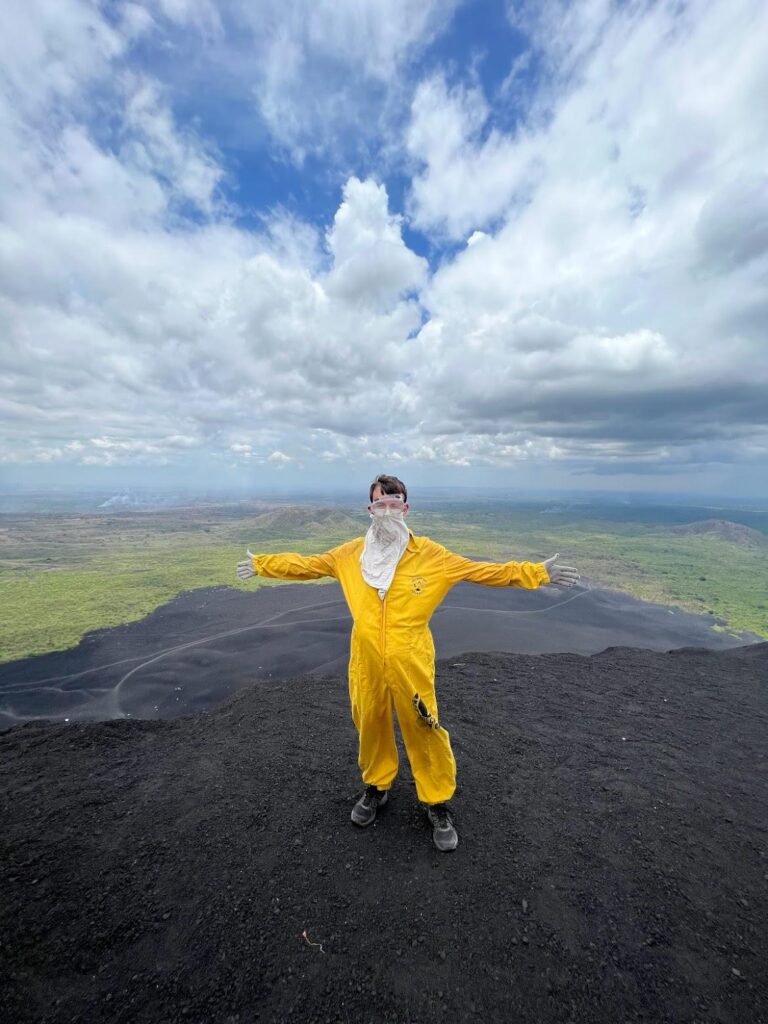
South America
I could write a million words on the best things to do in South America, but let’s try and summarise it briefly here.
Colombia has so much to offer. Medellin is fascinating with an interesting history and a party scene. Follow this 4-day itinerary to see the best bits. Nearby Guatape is home to a giant rock with breathtaking views of the surroundings. Tayrona National Park is a great jungle full of wildlife, Cali is the salsa capital, the coffee region has a lot to offer, small towns are lovely, some of the world’s friendliest people live here… the list goes on!
Ecuador has the Galapagos Islands famous for their wildlife. On the mainland, Cotopaxi Volcano is seriously cool (unfortunately it was covered by fog when I went however), Quito has the equator monument which is an interesting place. Adventure sports lovers will love Baños, and there’s lots of cool hiking and nature spots elsewhere.
Peru is home to Machu Picchu, as well as many other cool Incan sites in the Sacred Valley. Rainbow Mountain is awesome, with alpacas adding to the character, Huacachina is a fun desert oasis with sandboarding and great sunsets. Paracas offers a “budget Galapagos” wildlife experience through the Ballestas Islands. Arequipa is beautiful. Peru is great!
Bolivia is where you can see the incredible Uyuni salt flats. Although I’d recommend doing so as part of a 3-day tour to Atacama in Chile. La Paz is bonkers and hosts crazy places like the Witches’ Market (full of witchcraft items), with indigenous ladies (cholitas) wrestling in El Alto. You can also visit the Amazon from here.
Paraguay is less touristy, but has great food, chilled vibes and more relaxing activities rather than bucket list locations. Give my 1-week Paraguay itinerary a read for more on this hidden gems which I’ve been to many times.
Chile has some real gems. Enjoy stargazing in the Atacama Desert, Easter Island is a once-in-a-lifetime destination if you have the budget, and Torres del Paine in Chilean Patagonia has incredible views of nature.
Argentina is where to find the world’s best steak, experience the best of Patagonia, see penguins at Punta Tombo, drink wine in Mendoza, explore Salta’s Andean culture, visit Iguazu Falls, and we haven’t even covered European-style capital Buenos Aires yet.
Uruguay doesn’t shine as much as these other countries. Colonia del Sacramento is a nice day trip, and Punta del Este is known for its beaches. Montevideo has similarities with Buenos Aires, but isn’t quite as good.
Brazil is home to the Amazon rainforest, the wildlife-rich Pantanal and many fun activities in Rio de Janeiro. Paraty has great boat tours, and the small southern towns of Gramado and Canela have a great vibe at Christmas time. This massive country has loads to see and do.
Suriname has some nice colonial buildings in the capital. And erm… that’s about it. I guess the Amazon rainforest is out here, but you can see that in 9 different countries and Suriname sucks so you’re better off seeing this elsewhere. I even wrote a full post on why I don’t like Suriname.
Guyana is similar to Suriname in some ways. Unsafe, a bit boring, but on the plus side you can visit the Amazon. It does at least have one major attraction, Kaieteur Falls is one of the world’s most powerful waterfalls. It will cost you a few hundred dollars to see however.
Venezuela‘s best-known highlight is Angel Falls. However a lesser-known location in this country is the vast plains of Los Llanos, where you can find anacondas, capybaras, anteaters, crocodiles and so much more. I spent a few days in Los Llanos staying at Hato El Cedral and it was absolutely magical.
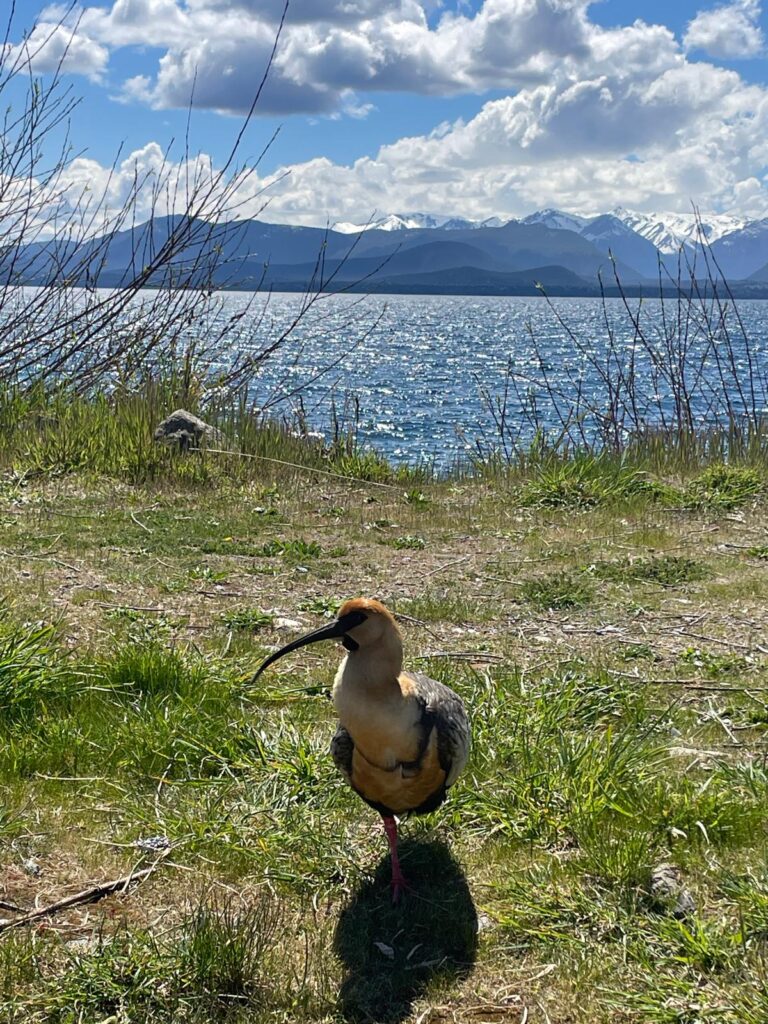
Verdict
It’s too hard to call a winner here. South America has more incredible places than Central America, as you’d expect given its size.
However, Central America packs so many awesome destinations into its territory, that it would be unfair to say South America is better in the activities department.
After all, you can’t see a volcano erupt or go volcano boarding in South America. Yet Central America has no answer to the incredible Uyuni salt flats or Patagonia.
Two incredible regions with so much to offer. It’s a draw.
Central America 0-0 South America
Safety
Central America
On one hand some of the safest countries in the Americas are here, such as El Salvador and Costa Rica.
On the other hand, gang violence has plagued Honduras for years, whilst Guatemala and Belize definitely have their problems.
Those three countries require extra planning, and I advise paying more for tourist shuttles to get around, rather than using local buses (not so much in Belize where Belize City is the main spot to be wary of, but it’s otherwise not so bad).
A lot of the problems take place in the big cities. Tegucigalpa, San Pedro Sula, Guatemala City, Belize City, San Jose and Colon to name a few.
But tourist spots can also be targeted. Most notably, hiking trails around Lake Atitlan in Guatemala where armed muggings aren’t unheard of.
I spent 3 months in Central America and never had any safety issues. However you’ve got to be careful here and do some extra planning to avoid dodgy places and bad situations.
Make sure you have good travel insurance before your trip just in case something goes wrong.
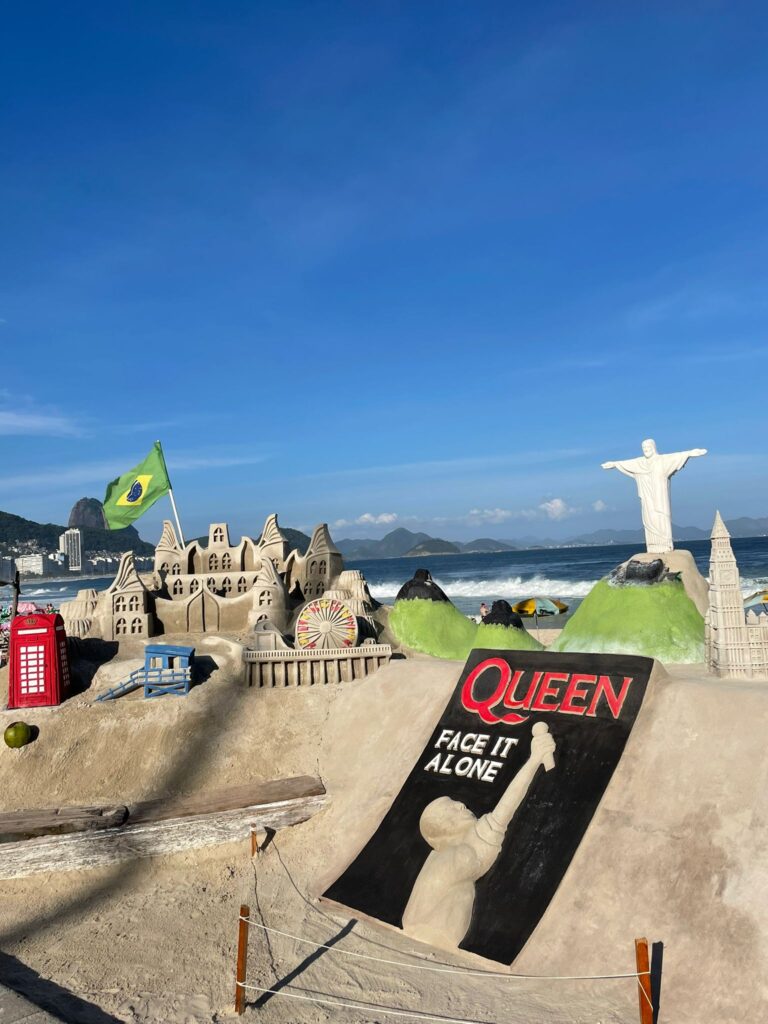
VisitorsCoverage Insurance
Don’t risk being left with a possible $100,000+ bill if something goes wrong on your travels.
Click on the link below to avoid a stressful trip, protect yourself, and know that you will be covered in emergency situations.
South America
Similarly, South America has some very safe spots and some very dangerous ones.
Argentina is very safe for travellers, as are Uruguay and most of Chile. Paraguay is safe for the most part, with a handful of exceptions which you can read about in my Paraguay safety guide.
Even southern Brazil is fairly safe. The small towns of Gramado and Canela didn’t even have bars on the windows of shops or houses, a rarity in South America.
The only other place I’ve been to without barred windows is Ushuaia on the southern tip of Patagonia. A real winter wonderland that should be high on your South America hitlist.
Read about South America’s safest cities for some other places where you don’t need to worry so much about personal security. To be honest it’s nice to spend some time in those spots, as it becomes draining constantly looking over your shoulder after a while.
On the flipside, northeast Brazil is full of violent crime. Even a friend of a friend of mine back in the UK was shot during a robbery in which his fiance was killed up there whilst checking out of a hotel.
Rio de Janeiro isn’t safe and Sao Paulo is not much better. Again, lots of violent crime round there.
Sticking with violence, mainland Ecuador and the capitals of Guyana (Georgetown) and Suriname (Paramaribo) are places to be very careful for the same reasons.
People have avoided Venezuela for years due to its violent reputation, whilst Colombia also has problems around its borders with Ecuador and Venezuela as well as near the notorious Darien Gap.
I will say that Venezuela surprised me in a positive way. It’s relatively safe to visit these days as long as you stick to touristy spots and don’t do anything that could make the authorities suspicious of your intentions.
Once again. Good travel insurance is vital in this part of the world.

VisitorsCoverage Insurance
Don’t risk being left with a possible $100,000+ bill if something goes wrong on your travels.
Click on the link below to avoid a stressful trip, protect yourself, and know that you will be covered in emergency situations.
Verdict
Another very hard one to call. Both regions can be dangerous if you go to the wrong places and fail to take adequate precautions.
Equally, both have some very safe places such as El Salvador or Patagonia.
I would say that South America has the greater extremes. The more dangerous places down there, are dodgier than anywhere in Central America.
Equally, the safest parts of South America, are safer than the safest parts of Central America. Although with Nayib Bukele continuing El Salvador’s safety drive, this may change in the near future.
Much of the Southern Cone (Chile, Argentina, Uruguay, Paraguay and southern Brazil) is safe, whereas only small parts of Central America are truly low-crime destinations.
Therefore I’m going to have to give this one to South America. Just.
Central America 0-1 South America
Costs
Central America
Central America is great for budget backpackers. I met many hippie types living off as little as US$5 a day down in the surf towns of El Salvador and Nicaragua here as well as by Guatemala’s Lake Atitlan.
Much of this region is very cheap to travel in.
Honduras, Nicaragua and Guatemala are some of Latin America’s cheapest nations. The latter two countries have a lot of cool places to see plus several bucket list experiences to enjoy, and the best thing is they cost peanuts.
El Salvador uses the US dollar. It’s more expensive than the three countries above, but still pretty affordable.
Panama is a little pricier, whereas Costa Rica and Belize are the most expensive countries in Central America. They cost around £40-£50 (US$50-US$63) on average per day to travel in.
Still, that’s cheaper than Western Europe or the USA, so they aren’t exactly budget busters when you look at the bigger picture.
>>> Stay in Central America on a budget <<<
South America
Bolivia was the cheapest South American country anyway. But now with a black market economy offering lots of extra money for US dollars, it’s possibly one of the cheapest countries globally.
Peru is very cheap to visit too, with Paraguay and Colombia also in the “very affordable” category.
Unfortunately getting great exchange rates in Argentina isn’t possible now that the Blue Dollar, which made it super cheap during my first visit in 2022 by doubling your money, is almost level with the official rate. Argentina is more of a mid-range country these days.
Ecuador is a lower-mid-range destination, although the Galapagos Islands are very expensive.
Brazil completes the mid-ranged set. Despite this, Rio de Janeiro costs a bit more than most places.
Uruguay and Chile are closer to Western European prices. Whilst Venezuela is also a costly country to visit with limited accommodation, inflated food prices and few tour operators still showing foreign tourists around.
Lastly, you have the Guianas: Guyana, Suriname and French Guiana. All three are ridiculously expensive in almost every area. Accommodation, food, activities… internal transport is at least quite cheap. Suriname is the most affordable of the three.
>>> Stay in South America on a budget <<<
Verdict
The first category with a clear winner. Central America is much cheaper than South America. Especially when you also factor in the transport distances between countries.
It can take days to drive across the likes of Brazil and Argentina which will cost a lot in bus fares. Whereas Central American countries are much smaller and therefore cheaper to travel through.
Central America 1-1 South America
Transport
Central America
Transport around Central America generally involves the use of chicken buses: former US school buses which were sold to Central American countries on the cheap, and used to transport chickens as well as passengers.
Chicken buses cost literal pennies. They are incredibly cheap, but not always safe. They’re pretty safe in El Salvador and Nicaragua, but not so much in Guatemala and Honduras. So be careful using these.
An alternative option is tourist shuttles, which cost a lot more but are much safer and only stop once or twice for breaks.
Boats are used to get between the islands in countries such as Belize, Honduras, Nicaragua and Panama. I also used a plane to fly from Corozal in Belize to San Pedro. Not the cheapest option, but the views of the bright blue waters below made this experience incredible.
Uber is good for getting around in the big cities. It exists in 5/7 Central American countries, with Belize and Nicaragua the exceptions.
>> Get cheap bus transport in Central America <<
South America
South America has more in terms of flight options, but they aren’t generally cheap, even with budget airlines.
We mostly used long-distance buses to get around and between countries. They do chip away at the budget as you end up taking so many of them. I would say the average price of a South American long-distance bus is roughly £25 (US$31). Although this ranges from around £5 (US$6) in Bolivia, to over £50 (US$63) in Argentina.
Uber is cheap and exists in most major cities.
>> Get cheap bus transport in South America <<
Verdict
The much shorter distances and much lower costs of transport make Central America the easier region to travel around in by far.
South America’s only advantage is that buses are generally more comfortable.
Central America 2-1 South America
Beaches
Central America
All 7 Central American countries have a lot of coastal areas, with many beaches along them. Not to mention that most countries own a series of islands with beaches of their own.
Beaches on the Caribbean Coast are classic yellow sandy beaches which attract a lot of tourists to relax, play in the sand, and head off on water-based excursions.
Volcanic activity in the region means that you will mostly find either rocky beaches or black sand beaches along the Pacific coastline. El Zonte (El Salvador) and El Paredon (Guatemala) are two famous examples of the latter.
The Pacific beaches are most popular with surfers. Most notably, El Tunco (El Salvador) and San Juan del Sur (Nicaragua).
Belize, Costa Rica, Honduras (the Bay Islands) and Panama (Bocas del Toro) are your best bets for Central American beaches.
In Panama, check out Playa Estrella which is full of giant starfish. I’m not really a beach person, but this is the coolest I’ve been to!
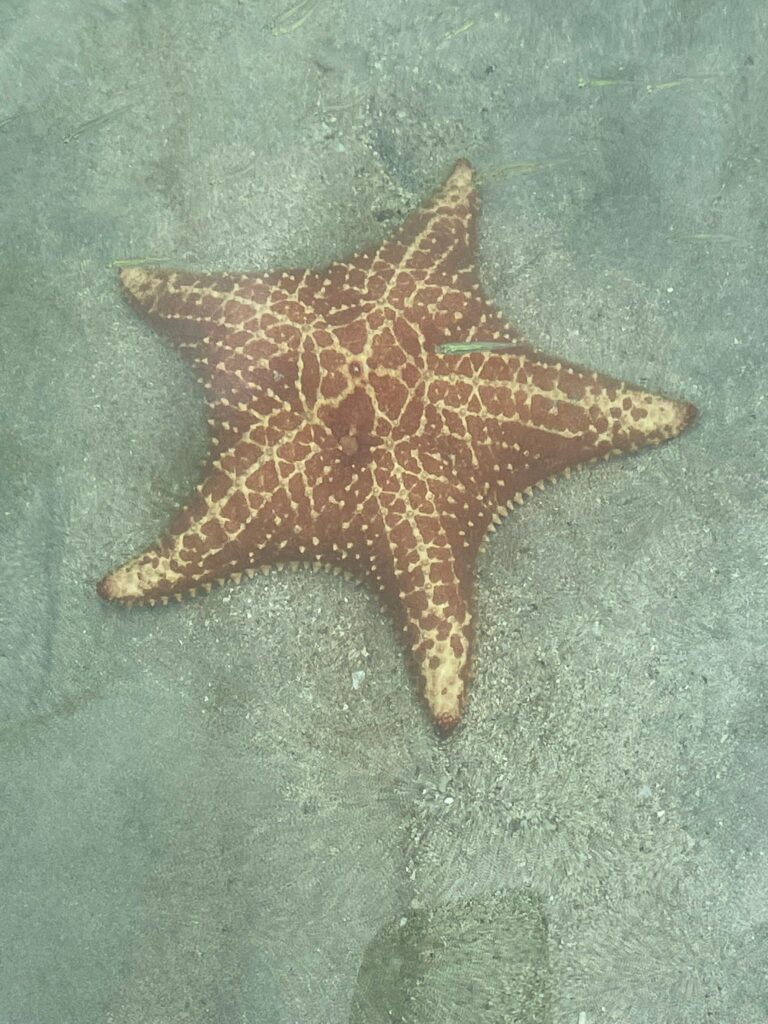
South America
South America has a mixed bag when it comes to beaches. They’re filthy in the Guianas, Colombian beaches are known for being nothing special, Argentina is amazing but not notable for beaches, and Ecuador’s coastline isn’t safe to explore.
On the other hand, Lima (Peru) has some decent beach spots around Miraflores, although Lima is only good to visit around December-April, as it’s covered in fog for most of the rest of the year.
Uruguay is popular with beachgoers who enjoy spending time in Punta del Este. In fact, beaches is just about the only area where Uruguay beats neighbouring Argentina, who it has a lot of similarities with.
And of course, we can’t talk beaches without talking Brazil. Probably the best country for beaches, although we were massively disappointed with Florianopolis, and Rio de Janeiro’s famous Ipanema and Copcabana beaches were absolutely packed.
Paraty was excellent in all fairness. And Camboriu had a good beach, even if it was quite busy.
I will say that Copacabana is great at sunrise though. There are very few people around at 5am which is the best time to visit.

Verdict
South America’s beaches are a mixed bag, they’re generally far apart from each other, and many of the more famous ones are packed with tourists.
Central America on the other hand, has lots of great beaches, some with cool wildlife, and a lot going on.
Central America has better beaches than South America overall.
Central America 3-1 South America
Volcanoes
Central America
You can see Volcan de Fuego erupt in Guatemala. Don’t miss out on the opportunity to do that. Click on the link below and book this once-in-a-lifetime adventure if you do indeed find yourself in Guatemala.
Elsewhere, Nicaragua is known as “the land of lakes and volcanoes”, and there are numerous opportunities to hike up and even board down volcanoes.
In El Salvador, I really enjoyed hiking up Santa Ana Volcano where I had great views of Lago Coatepeque. One of many factors that makes El Salvador one of Central America’s best countries.
Another popular one is Costa Rica’s Arenal Volcano. Although I wouldn’t put it on the same level as the others mentioned above.
When I visited Granada in Nicaragua during my 2022 trip to the country, you could visit nearby Volcan Masaya and see lava inside the crater. Unfortunately a 2024 landslide means that is no longer possible.

South America
All of South America’s volcanoes are on the western side of the continent, mostly along the Andes mountain range which is where the South American (tectonic) Plate and the Nazca Plate meet.
I’ve seen volcanoes in Bolivia’s altiplano. A magical part of the world, but not notable for its volcanoes really.
Cotopaxi in Ecuador is really cool. Unfortunately, your experience there comes down to the weather. It’s a stunning location in good weather, but difficult to see in foggy weather (of course, I had the latter during my visit).
Chile is a great country for volcano spotting. There are plenty to find along this thinly-shaped nation which is pretty exposed to tectonic activity.
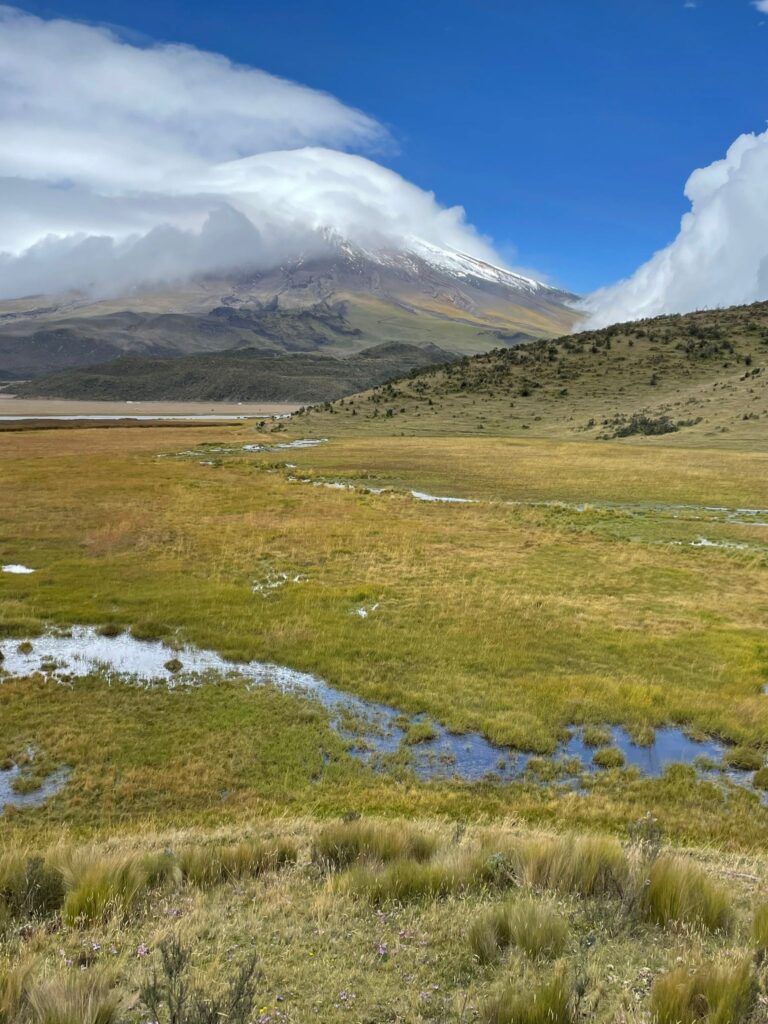
Verdict
Central America wins again. Not only does it have so many volcano experiences available for tourists, but seeing a volcano erupt in Guatemala and boarding down another in Nicaragua are two super cool and unique experiences you can’t really do anywhere else.
You can’t really beat that.
Central America 4-1 South America
Jungles
Central America
Costa Rica’s main selling point is its jungles. And there are some great ones. My favourites were in Tortugero, although Monteverde and Manuel Antonio were also cool.
Panama is another great jungle destination. Bocas del Toro has some lesser-explored areas where you can walk through the trees alongside snakes, monkeys, frogs and much more. I enjoyed exploring the jungles on northern Colon Island.
Panama also has the Darien Gap in the south, which is a notorious drug and people-smuggling route, but it also has cool wildlife and indigenous groups. Just don’t venture too far from the entry point, otherwise it can be very dangerous.
Nicaragua’s Charco Verde on Ometepe Island was a real surprise. Very few people were there, and I was able to spend hours walking through this wildlife-rich paradise.
Guatemala is another country with good jungle spots, especially around Tikal. You may even spot a jaguar up there if you’re lucky! Unlikely however, as jaguars are so rare that even most locals will never see one.
Here are some Costa Rican jungle adventures worth checking out:
South America
There are 8/12 South American countries (plus French Guiana) with access to the Amazon Rainforest. You simply can’t ignore the world’s most famous jungle environment, which is home to numerous local tribes and an abundance of awesome creatures.
Elsewhere, Tayrona National Park in Colombia is another fun spot. It’s home to the indigenous Kogi people, who I encountered walking through the trees in white robes and bare feet.
There were also lots of cool creatures there, including capuchin monkeys.
Argentina’s Iguazu Falls, which is shared with Brazil, also had jungle surroundings. Again, you can find lots of wildlife there.
Look at these amazing Amazon tours ahead of your dream trip:
Verdict
This one is hard. Central America’s jungles are awesome and outside of Costa Rica at least, underrated.
But South America on the other hand has the Amazon. And you can’t really beat that right?
Therefore, I’m going to have to narrowly call this one in favour of South America.
Central America 4-2 South America
Culture
Central America
Of the 7 Central American countries, 6 have a lot in common. They’re all Spanish-speaking countries with a proper Latin American vibe.
Belize on the other hand is very different. It’s an English-speaking country with a very Caribbean feel to it. The people, the culture, everything in Belize has far more in common with the Caribbean islands than any other country on the Central American mainland.
Guatemala is an interesting cultural country. The Mayan people still live there today and practice ancient traditions. I even saw a Mayan ceremony taking place around a bonfire at the ruins of Tikal, a sacred spot within their culture.
Panama is home to indigenous tribes living within the Darien jungle. Unfortunately there are fake tribal villages which have been set up as tourist traps, and they don’t offer the same authentic experiences.
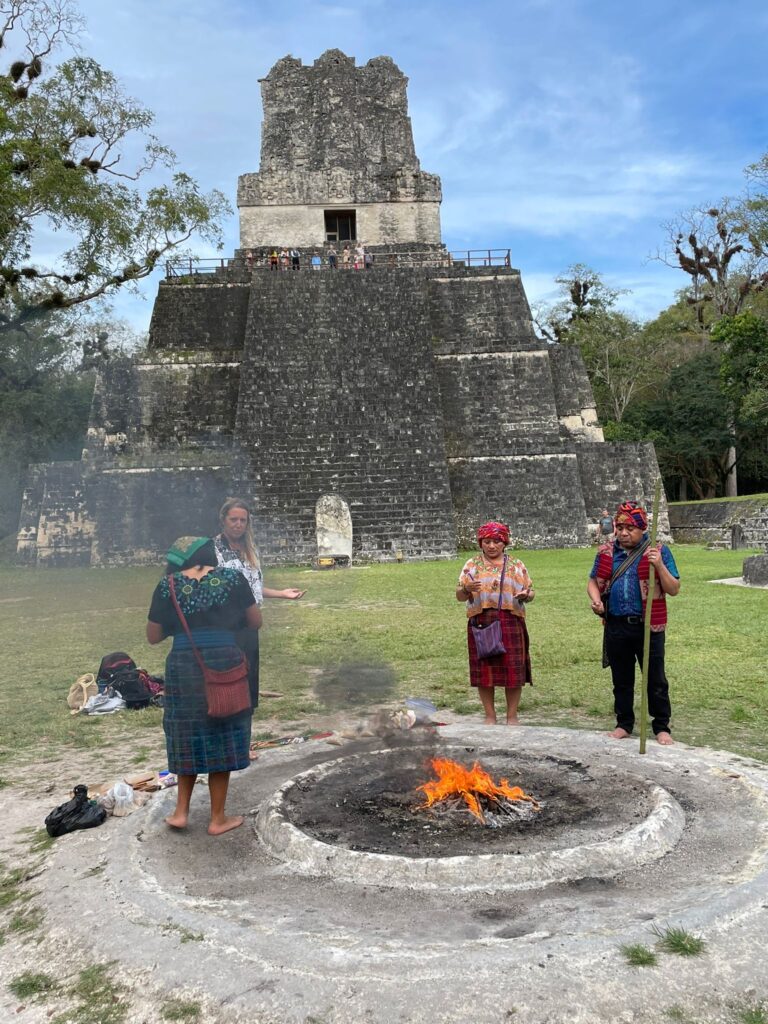
South America
South America has a number of different cultures.
Guyana and Suriname are effectively Caribbean countries. They speak English and Dutch respectively, and felt much more like Belize than any country in the rest of South America.
French Guiana is a strange one. It didn’t feel French to me, despite the language and the political ties to France. However it didn’t feel Caribbean or Latin either. It just exists in a bit of a bubble without much going on.
Elsewhere, Argentina, Uruguay and some parts of Chile feel far more European for the most part. The architecture in the capitals, the people and the love of a good steak over anything else all give off the feeling of Spanish-speaking countries that have much more in common with Italy or France. In fact Buenos Aires felt more French to me than French Guiana!
The Andean countries have their own unique culture. They are Ecuador, Peru and Bolivia, although parts of Chile and Argentina also fit into that category.
The Andean people are much more shy than those elsewhere in South America, but they’re pretty hardy, live at high altitude and survive in tough conditions.
Colombians and South Brazilians are very friendly and open people. I would say Colombians are the easiest people to make friends with across the continent.
And Bolivia deserves a mention on its own. Bolivia is dominated by indigenous people, with regular parades along the streets wearing traditional clothing, and unique experiences such as the Witches’ Market (witchcraft is still practiced in Bolivia) and cholitas wrestling in El Alto.
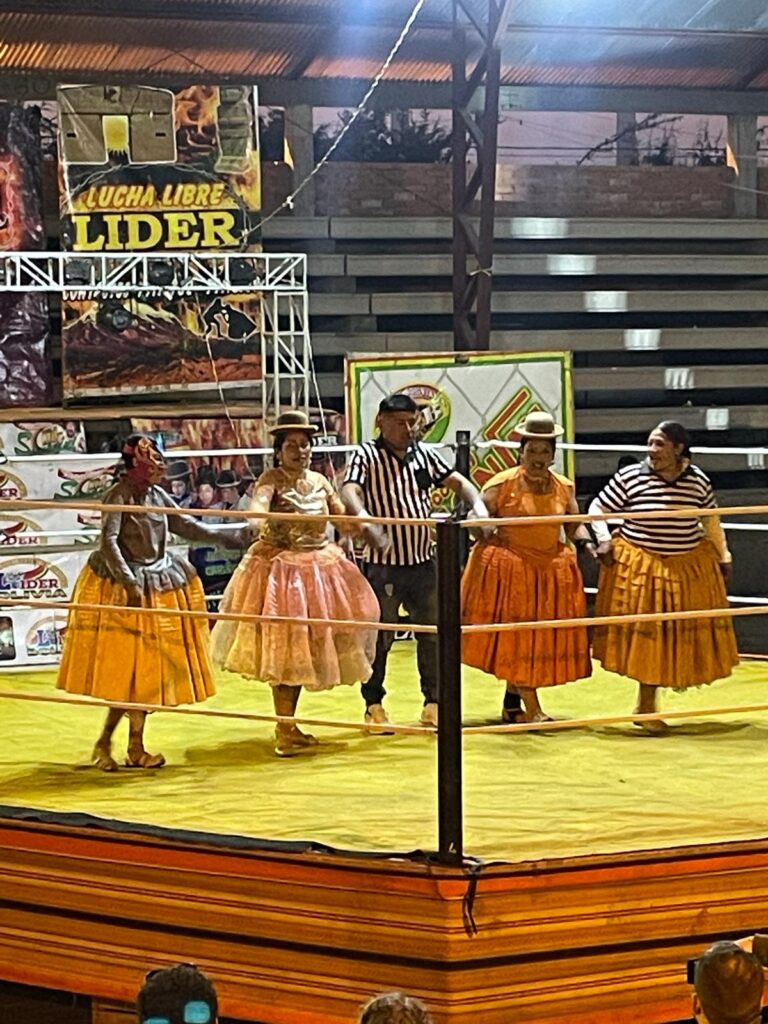
Verdict
A clear win for South America. Central America has some interesting cultural experiences, but they aren’t a patch on what you encounter in South America.
Bolivia is my favourite country in the world for pure cultural experiences.
Central America 4-3 South America
Ancient Ruins
Central America
Central America was home to the Mayan civilisation, which stretched from eastern Mexico, all through Belize and Guatemala, right up until the northern tips of El Salvador and Honduras.
The last Maya city, Nojpeten (modern day Flores in Guatemala) fell to the Spanish in 1697, leaving only ruins behind today.
Some of the Mayan ruin sites are pretty cool. Chichen Itza in Mexico is recognised as one of the Seven Wonders of the World.
Although I would say Tikal in Guatemala is more interesting, with numerous ruins hidden within the jungle, modern day Mayan people still conducting ceremonies, and loads of cool animals living in the jungle.
Copan Ruinas in Honduras is another really interesting site. I would say the ruins aren’t so spectacular, but the macaws that live there make it a unique experience with something to offer that the other ruin sites don’t have.
There are also some smaller ruins across Belize and the north of El Salvador.
Central America is one of the best regions in the world to see what ancient civilisations left behind.
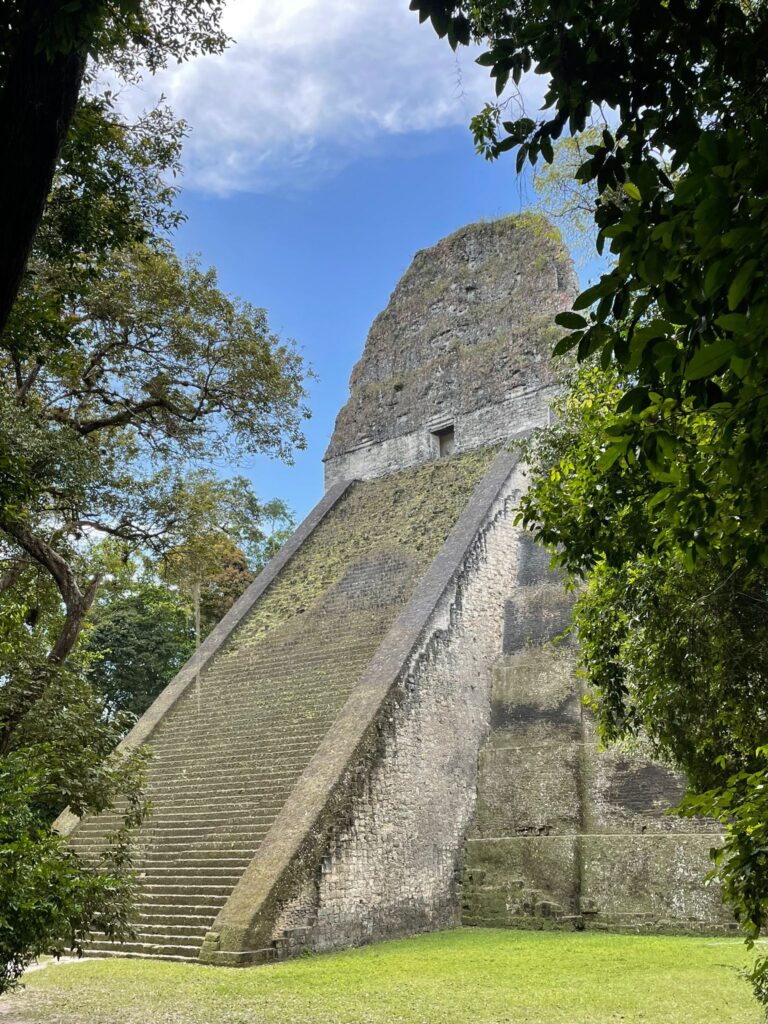
South America
If Central America was known for the Mayans, then South America was known for the Incas.
The Inca Empire stretched through much of modern-day Peru, Ecuador, Bolivia and Chile as well as smaller parts of Colombia and Argentina.
Just like the Mayans, the Incans created one of the Seven Wonders of the World, namely Machu Picchu in Peru.
Machu Picchu is definitely worth a visit, although it gets very busy and you should make arrangements in advance.
With Cusco being the capital of the Inca Empire, it’s no surprise that Peru is the best place to see Incan ruins. Aside from Machu Picchu, there are a few smaller ones in Cusco, and several in the nearby Sacred Valley.
There are a handful of other Incan sites tourists can visit outside of Peru. Examples include Cojitambo in Ecuador and Fort Samaipata, which is a UNESCO World Heritage Site in Bolivia.
Peru however, is by far the best country for exploring South America’s past civilisations.
There is one real gem that isn’t related to the Incas, and that’s the Moai statues of Easter Island.
I went there in 2022 and it was magical. A real once-in-a-lifetime experience. I would recommend Easter Island to anyone. You only need around 4 days to see everything, but it’s pretty incredible to see the Moai with your own eyes.
The only thing is, it’s debatable as to whether Easter Island is actually part of South America or not.
Politically, yes. It is officially a part of Chile. However, geographically it is one of the Pacific islands, and the culture is much more Polynesian. To be honest it felt nothing like Chile at all.
Elsewhere, you have several Jesuit Missions across Paraguay, Argentina and Brazil. I would say that the Incan ruins are more interesting though.
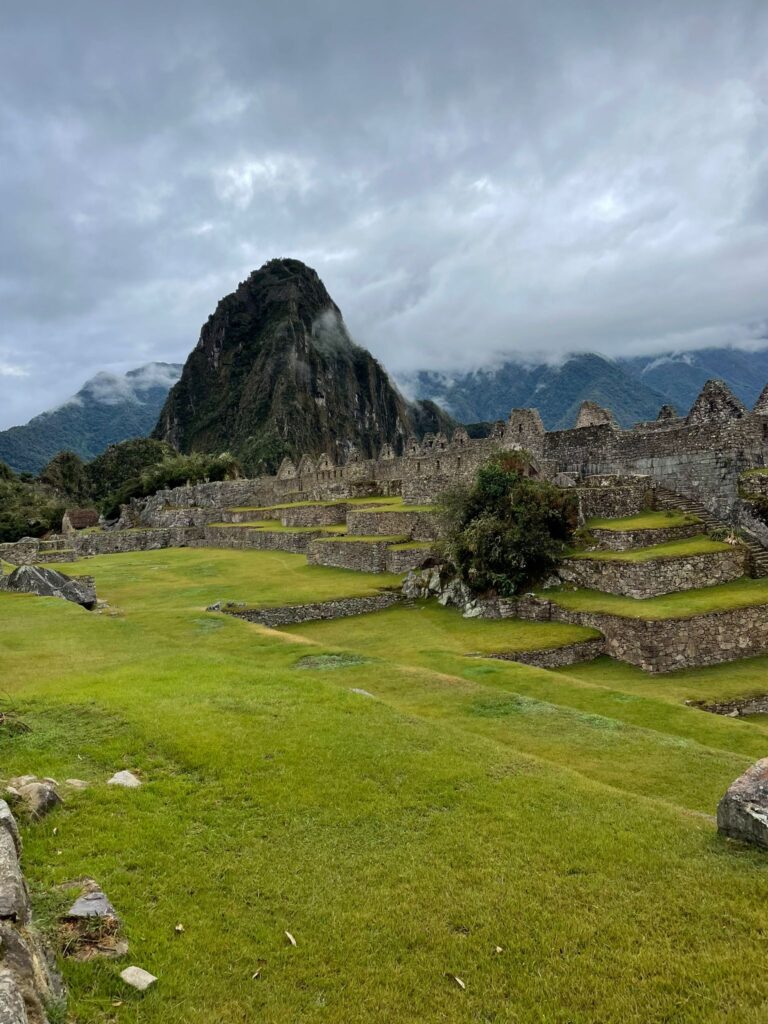
Verdict
A tough one really. The Incan ruins are a huge part of what makes Peru such a great country to visit. I had a lot of fun trekking along the Salktantay Trail for 5 days on the way to Machu Picchu.
But there aren’t so many historical remains of the past in most of South America, and whether the awesome Moai are part of South America or not is debatable.
Central America on the other hand has lots of cool ruins which are easy to reach and cheap to visit.
I’m going to call this one as a draw.
Central America 4-3 South America
Parties
Central America
Some countries such as Guatemala and El Salvador aren’t really known for their party scene.
Others are surprisingly famous on the “Gringo Trail” for their nightlife. Nicaragua especially so.
Nicaragua is one of the cheapest countries in the world, which may also explain why it’s become famous for parties, although the ones aimed at tourists aren’t exactly the cheapest… There are two in particular that attract backpackers from across the planet.
One is the Treehouse Hostel party. Once a week, on a Friday, they host a big party in the Nicaraguan jungle which you can buy tickets for on their website.
The other is “Sunday Funday” at San Juan del Sur, a pricy bar crawl costing US$35 which includes entry to 5 bars and free shots as well as other entertainment.
Panama also has a popular party known as Filthy Friday which takes place through some of the Bocas del Toro islands. I didn’t go myself, but met several people who did, and they all loved it, so you may too if that’s your sort of thing.
Filthy Friday costs a whopping US$40 though.
South America
South America is home to some mega party spots like Medellin in Colombia and Brazil’s Rio de Janeiro.
Personally, I’d advise against nights out in Rio. It’s not a safe city and it’s the last place where you want to drink alcohol and let your guard down.
Violent muggings and worse are fairly common in Rio unfortunately.
Medellin is best-known for Gringo Tuesdays, a language exchange-turned-party which offers great opportunities for Colombians and foreigners to interact.
Gringo Tuesdays also exists in Bogota, Cartagena, Cali and Peru’s capital Lima.
You do have to be careful in Medellin. Make sure your drinks are covered at all times, as spiking is a real issue here. I would advise drinking only bottled beer to be on the safe side.
South America is also home to the likes of Argentina’s capital Buenos Aires, which is popular for tango dancing. Whilst Wild rover hostels in Peru and Bolivia often host large parties of their own which like Gringo Tuesdays, are events that bring locals and foreigners together.
Verdict
Central America has a handful of backpacker-friendly dedicated events. But South America has much more to offer in terms of an all-round package.
Not just a handful of weekly events, but mega cities that locals party hard in, and don’t just cater to people backpacking the Gringo Trail.
Central America 4-4 South America
Weather
Central America
Generally a warm region, albeit less so in much of Guatemala where the country is at a higher altitude, meaning it feels much cooler than the rest.
There is a rainy season from April-November. Unfortunately this part of the world has a brutal hurricane season from June-November which can cause mass flooding and destruction at times.
Most countries in the region are vulnerable to hurricanes, with Panama and El Salvador the two countries less likely to be hit hard.
I would advise avoiding Central America within this time period.
South America
South America is massive and the weather varies greatly depending on where in the continent you are.
The Andean countries (Ecuador, Peru, Bolivia) tend to be very mountainous. As a result, they have a cool climate most of the time.
This is also true for much of Chile, which is dominated by the Andes mountains and the cool Patagonia region. Although Atacama Desert gets very hot and you need to take a lot of water whilst doing tours.
Argentina and Uruguay have a lot in common with Europe, not just culturally, but also in terms of the weather. They are mostly cooler countries, although northern Argentina is a lot more tropical, especially around Iguazu Falls and near the Paraguay border.
Brazil has a reputation for being a sunny paradise. Trust me, it isn’t quite like that. It rains almost daily during the summer from December to February. Some parts of the country such as Rio de Janeiro become very humid.
Needless to say, it’s generally hot and humid around the Amazon. Brazil is generally cooler in the south, near the Uruguay border.
The Guianas are hot countries throughout the year.
Colombia has a more mixed climate with cooler weather in capital Bogota, and very warm weather in Cartagena and other spots along the Caribbean coast.
Medellin is known as “the city of eternal spring” for its generally pleasant climate all year round.
Verdict
South America has better weather. It offers more balance, and doesn’t have the brutal hurricane season that Central America does.
It’s not without problems, and flooding can be bad when wet weather strikes, but it avoids the sort of issues its northern neighbour has in the worst seasons.
Central America 4-5 South America
Best for Beginners
Central America
After Mexico, Central America was where I took my first footsteps in Latin America, and it’s mostly a good region to ease yourself in.
Honduras and Guatemala are trickier to get around, as you do have to worry about safety more than elsewhere.
Costa Rica is the perfect beginner spot, as it is the one country in the region that attracts lots of tourists who aren’t necessary adventurous backpackers looking to travel all through Central America. It has a lot of tourist infrastructure already in place.
Central American countries are mostly quite cheap, and small enough to travel around without too many issues.
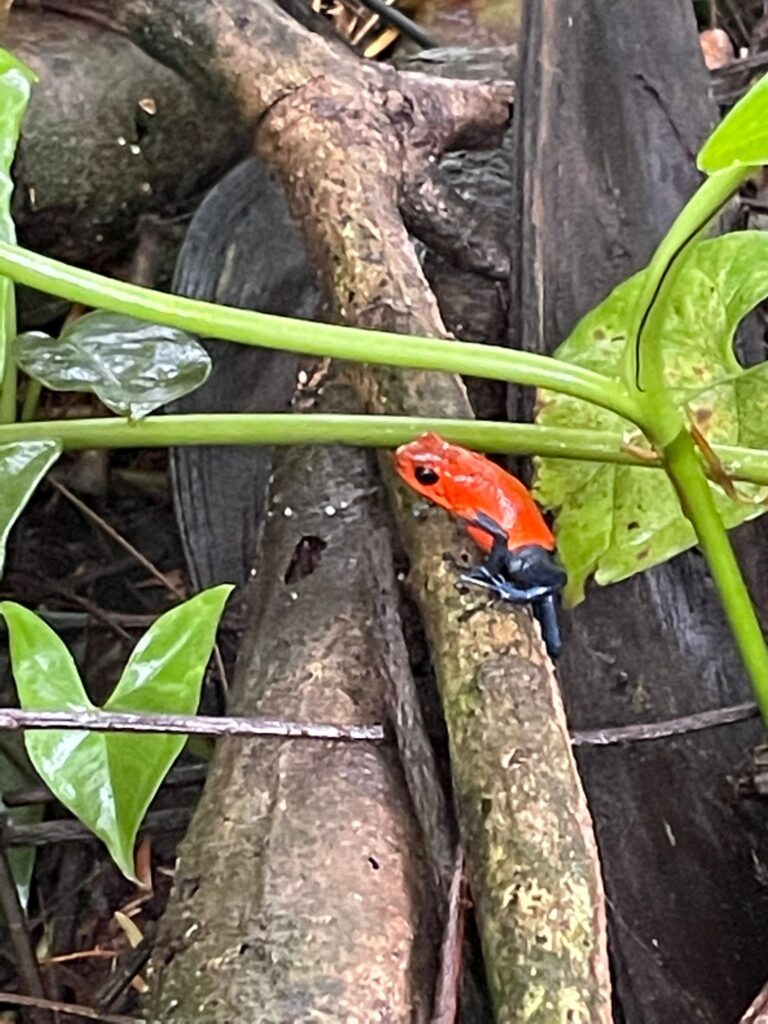
South America
South America has great beginner countries such as Argentina and Uruguay which are safe, have lots in common with Europe, and are generally quite easy to get around.
On the flipside, it has some much trickier countries such as Venezuela, which no longer has much of a tourism industry, and the Guianas which are rugged, expensive, underdeveloped and unsafe.
Equally, Brazil poses great challenges. You need a CPF (Brazilian tax number) to do a lot of things including booking buses online and purchasing a SIM card (buying an Airalo eSIM is a lifesaver in Brazil). It’s also unsafe, and the language (Portuguese) is different to anywhere else in the Americas.
Ecuador and Colombia have lots of issues with crime. I’m glad that I was able to visit all 7 Central American countries, before making my way down to Colombia, to understand how to traverse through Latin America safely and take necessary precautions.
Bolivia is great fun, but you may have issues with the high altitude if you aren’t used to that sort of environment. Peru is more beginner-friendly, but does still have a lot of mountainous terrain which can be hard to breathe in, especially if you haven’t acclimatised.
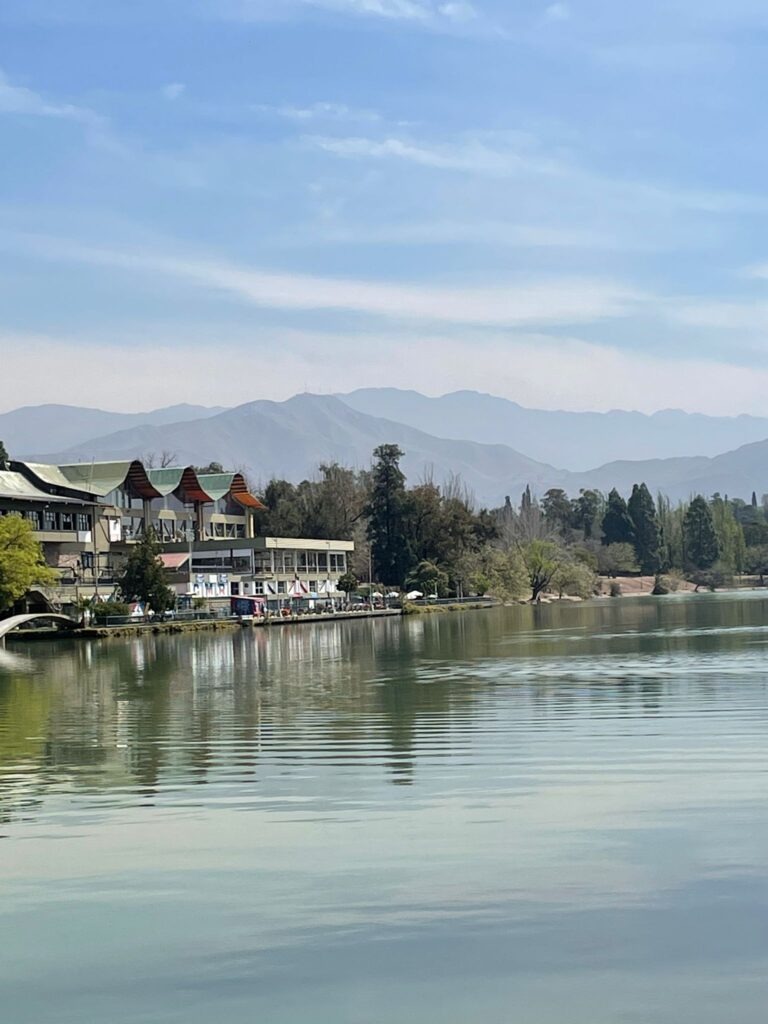
Verdict
I would say South America is slightly more beginner-friendly than Central America, purely because the easiest destinations here (Argentina and Uruguay, and to a lesser extent Chile) are easier to travel in than the easiest of Central America (just Costa Rica really).
Despite that, all of the hardest countries in the two regions combined, come within South America (Venezuela, Brazil and the Guianas). But you can easily avoid these countries on your first trip.
Whereas the only easily avoidable country in Central America is El Salvador, due to its geographic position tucked between Guatemala and Honduras in a small corner.
Although you don’t want to skip El Salvador, as it’s safe, and good fun. But it’s the only Central American country that’s easy to miss if you start in Belize and work your way down to Panama.
It’s a close one, but South America just about edges it for me.
Central America 4-6 South America
Overall… Central America or South America: Which is the Best Region to Visit?
Really, it depends on what you’re looking for, what your budget is, and how much time you have.
If you have up to 3 months and a lower budget, Central America is the better option. It’s one of the most budget-friendly options in the world. You can have a great time by following my 3-month Central America trip itinerary which takes you through the regions’ best places.
If you have more time and more money to spend (especially on transport), then South America may be the better choice for you.
It’s hard to compare the best activities in each region, because the salt flats of Uyuni are absolutely breathtaking, and Patagonia is a truly special part of the world. Yet on the other hand, seeing a volcano erupt with your own eyes is serious bucket list stuff.
If you have half a year, here’s my 6-month route through South America which combines the best activities I’ve done during two long-term trips down here.
My recommendation is to do both regions and spend a lot of time exploring them. During my first long-term trip through the Americas I spent 3 months in Central America, and 4.5 months in South America. For Central America, 3 months is just enough time to see the highlights. But you need a minimum of 6 months to see the best of South America.
More Posts on Central America
- Central America Or South America: Which Is Better To Visit?
- 3 Month Central America Itinerary Without Flying
- Top Ten Things To Put On Your Central America Bucket List
- Best Country In Central America To Visit
More Posts on South America
- The Safest Countries In South America In 2025: Ranked
- Best Countries In South America To Travel To: Ranked
- Central America Or South America: Which Is Better To Visit?
- What Are The Best South American Countries For First Timers?
- What Are The 10 Safest Cities In South America In 2025?
- The Ultimate 6 Month South America Itinerary On A Budget
